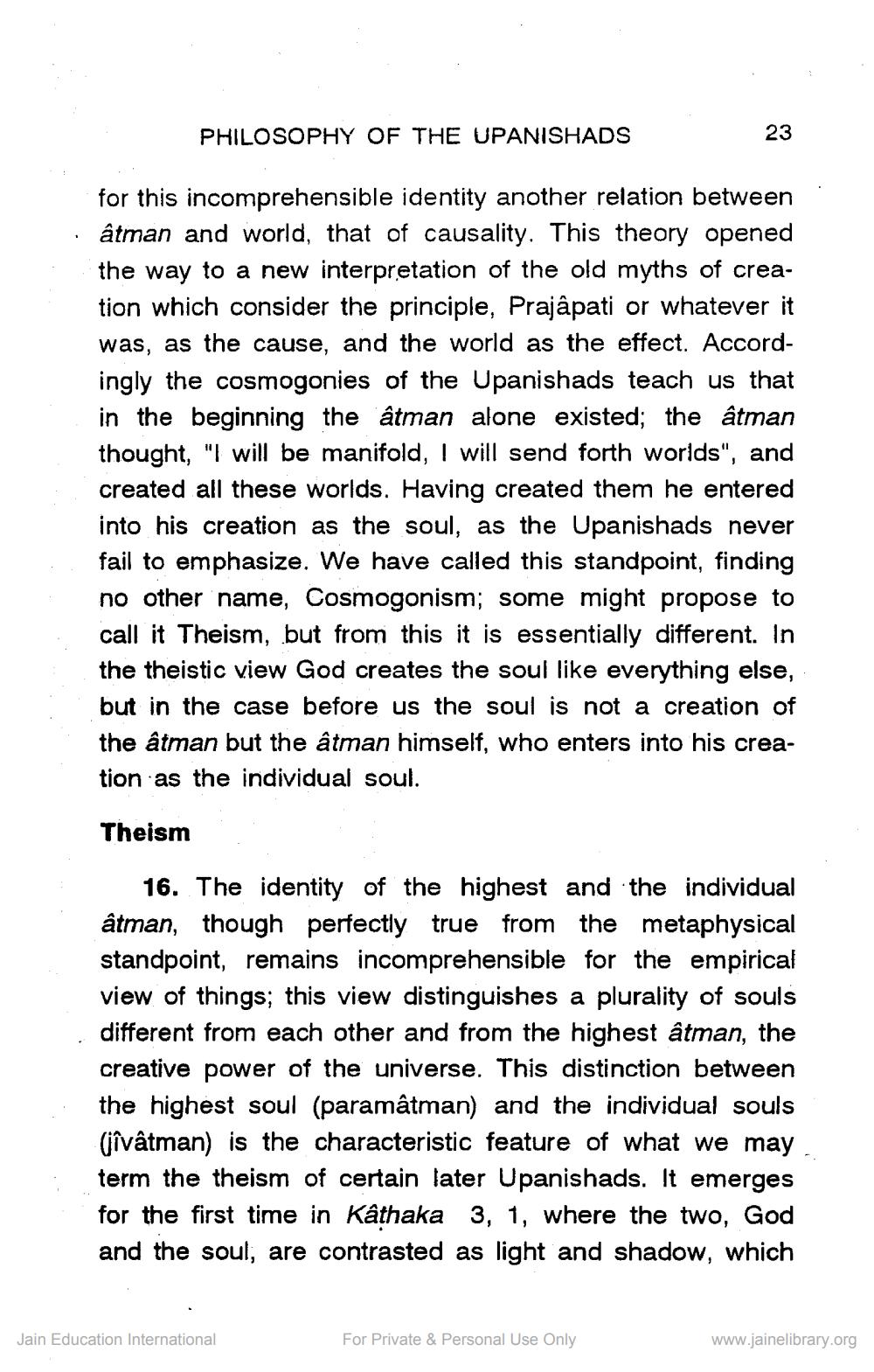________________
PHILOSOPHY OF THE UPANISHADS
for this incomprehensible identity another relation between âtman and world, that of causality. This theory opened the way to a new interpretation of the old myths of creation which consider the principle, Prajâpati or whatever it was, as the cause, and the world as the effect. Accordingly the cosmogonies of the Upanishads teach us that in the beginning the âtman alone existed; the âtman thought, "I will be manifold, I will send forth worlds", and created all these worlds. Having created them he entered into his creation as the soul, as the Upanishads never fail to emphasize. We have called this standpoint, finding no other name, Cosmogonism; some might propose to call it Theism, but from this it is essentially different. In the theistic view God creates the soul like everything else, but in the case before us the soul is not a creation of the âtman but the âtman himself, who enters into his creation as the individual soul.
23
Theism
16. The identity of the highest and the individual âtman, though perfectly true from the metaphysical standpoint, remains incomprehensible for the empirical view of things; this view distinguishes a plurality of souls different from each other and from the highest âtman, the creative power of the universe. This distinction between the highest soul (paramâtman) and the individual souls (jîvâtman) is the characteristic feature of what we may term the theism of certain later Upanishads. It emerges for the first time in Kâthaka 3, 1, where the two, God and the soul, are contrasted as light and shadow, which
Jain Education International
For Private & Personal Use Only
www.jainelibrary.org




